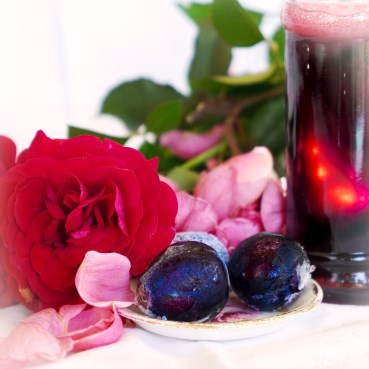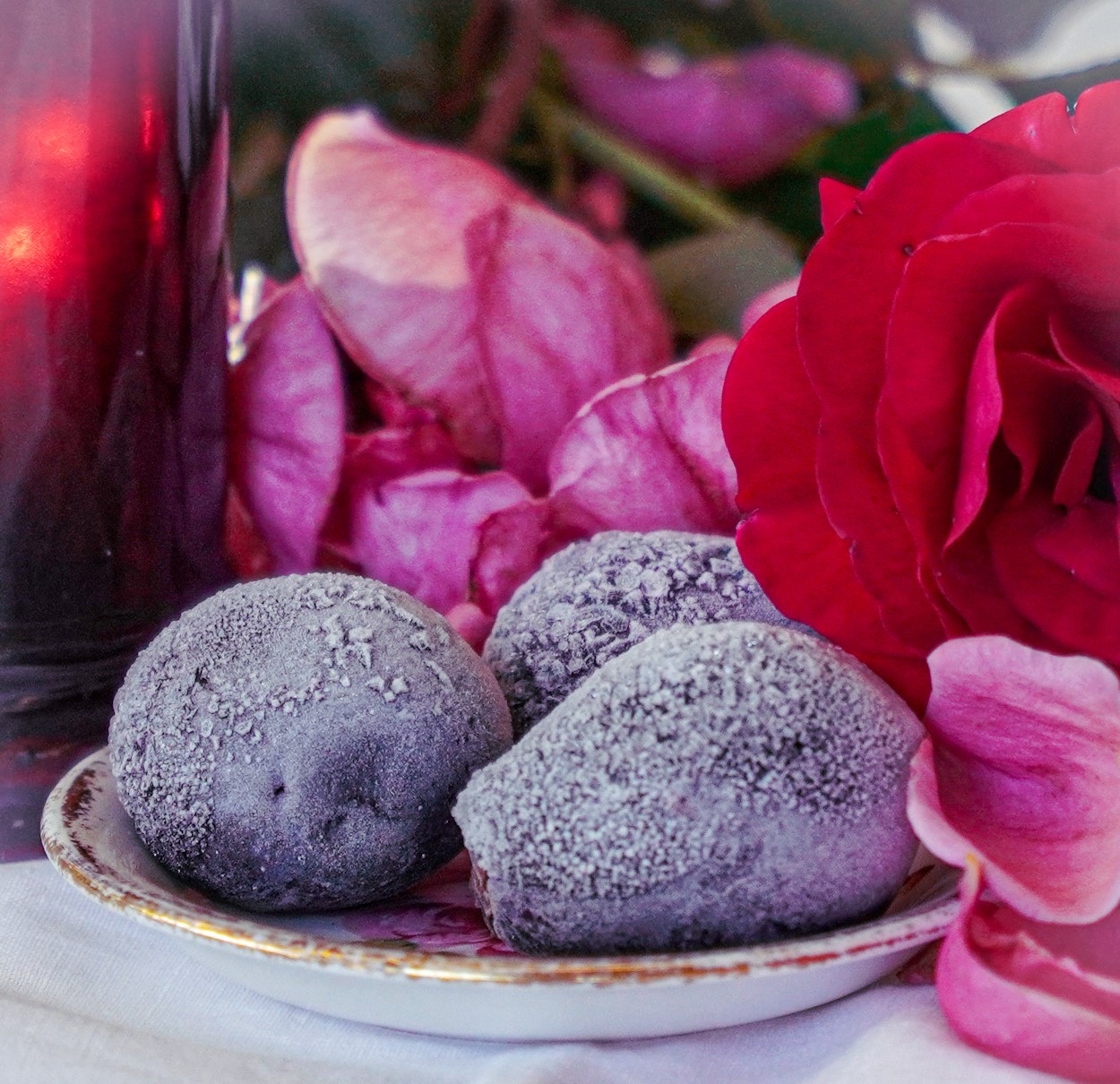Davidson’s Plum and Rose Petal Jelly Recipe
Davidson’s Plums are a native Australian fruit that resembles a purple Sugar Plum. A big difference is that the Davidson’s plum is so tart that it’s usually only eaten when cooked and sweetened.
The Davidson’s Plum tree is a small, narrow tree that loves nothing more than to grow in a moist, part-shaded spot. Apart from that, they need little care. But you’ll be waiting 4-6 summers for your first harvest of plums.
There are two commonly available species of Davidson’s Plum. Davidsonia pruriens has panicles of fruit hanging from the main trunk, and Davidsonia jerseyana has fruit growing directly on the trunk. That is called ‘cauliflory’.
Fruits from both trees taste much the same. Just remember to keep a close eye on developing fruit, as they will drop from the tree as soon as they are ripe. Gather them from the ground quickly before they spoil. Any unused fruit can be frozen whole until you are ready to bake with them. In the past I’ve made Tomato and Davidsons Plum Sauce, jams, and jelly as well as preserves to use when baking.
The rose petals… I use our own organic, chemical free rose petals that are fragrantly beautiful. You can use a combination of coloured petals from a few rose bushes, as we often don’t have enough of the same flowers at the same time. They are all edible.
You’ll need
1 kg Davidson’s Plums fresh or frozen
100 ml orange juice
100 ml water
400 grams organic rose petals
1 kg white sugar
Put the washed whole Davidson’s Plums into a stockpot with the orange juice and water. Bring slowly to a gentle simmer. Cook the plums over medium heat for about 30 minutes until they change colour, release their juice and become very soft. Stir occasionally to prevent sticking.
Remove from the heat and set aside to cool.
Once cool, squish the plums with your fingers and remove the two hairy seeds from each fruit. Discard the seeds and keep the fruit, skins and juice, adding them back to the pot. Add the rose petals to the pot and bring back to a gentle simmer. Simmer until the rose petals become mushy and lose their shape. It will be about 15 minutes depending on the type of roses you use.
Remove from the heat and strain the pulp through a muslin lined colander over a pot. Allow to drip for several hours until the juice has run out of the fruit and petals. Don’t push it through the sieve or your jelly will be cloudy.
Keep the fruit and petal solids for making cakes or puddings, but for the jelly you’ll just need the liquid. Add it back to a rinsed pot with 1 kg sugar. Stir until it boils gently. Continue cooking, stirring occasionally until it becomes thicker. This will take up to 30 minutes depending upon the pot size and heat. You’ll also know it’s ready when a few drops of the jelly on a cold plate start to wrinkle as when you push the jelly along with your finger.
During the last phase of jelly cooking, clean and boil your jars and lids ready for the jelly. They need a good rolling 10 minute boil and should be used hot when filling with the jelly. This recipe will yield 2-3 jars about 250-300 ml in size.
Once the jelly is thickening, remove the jars from the hot water and drain. Fill with jelly to 1 cm from the top of the jar. twist the cap on to seal and set the jars on a board to cool. As the jars cool, you should hear a pop as the lids depress and an airtight seal is formed.
Your brilliantly purplish red Davidson’s Plum and Rose Petal jelly will keep 12 months in a cool spot such as a pantry.
PS. The picture shows some Davidson’s Plums that I had washed and frozen, all ready for making into jelly, jam and preserves. Don’t you love the icy crystallising on the skin as they begin to thaw?






